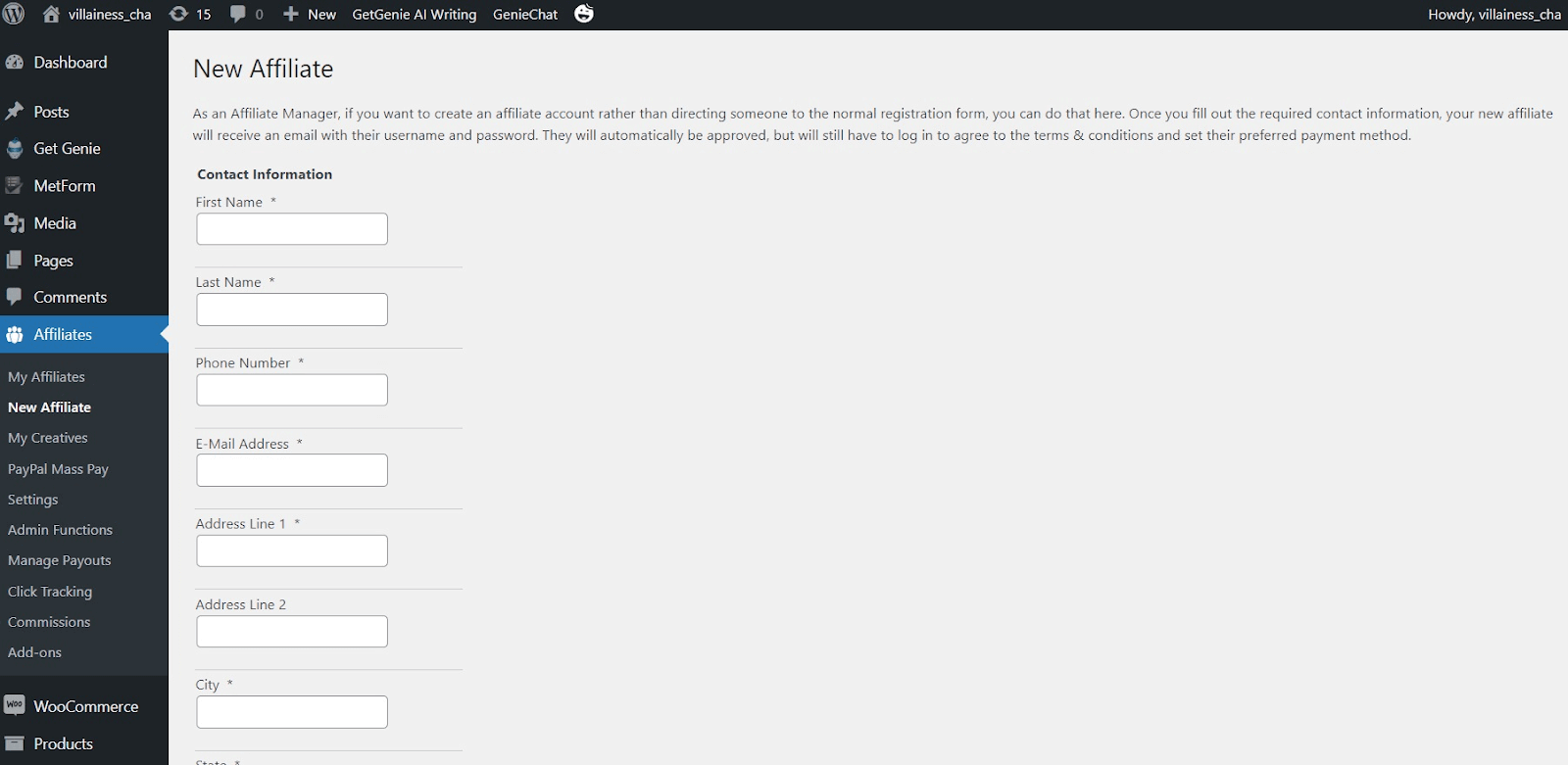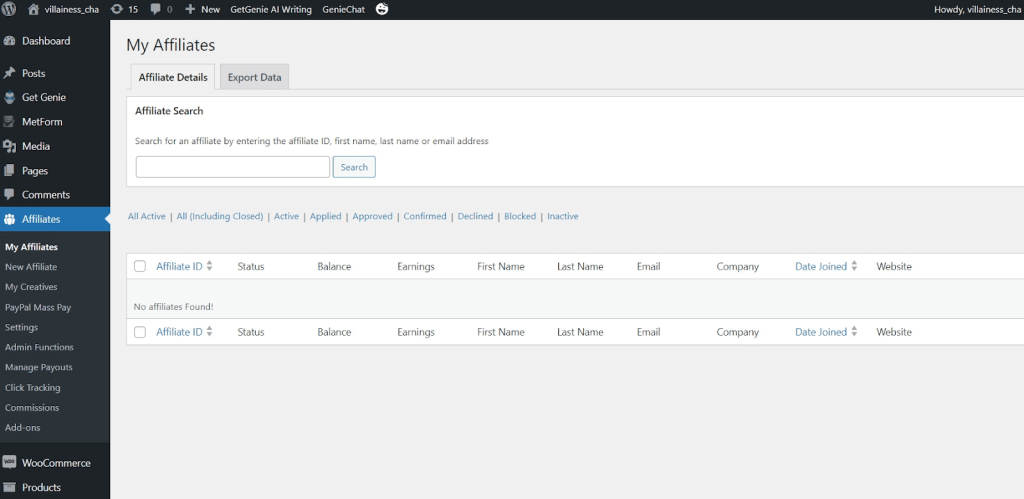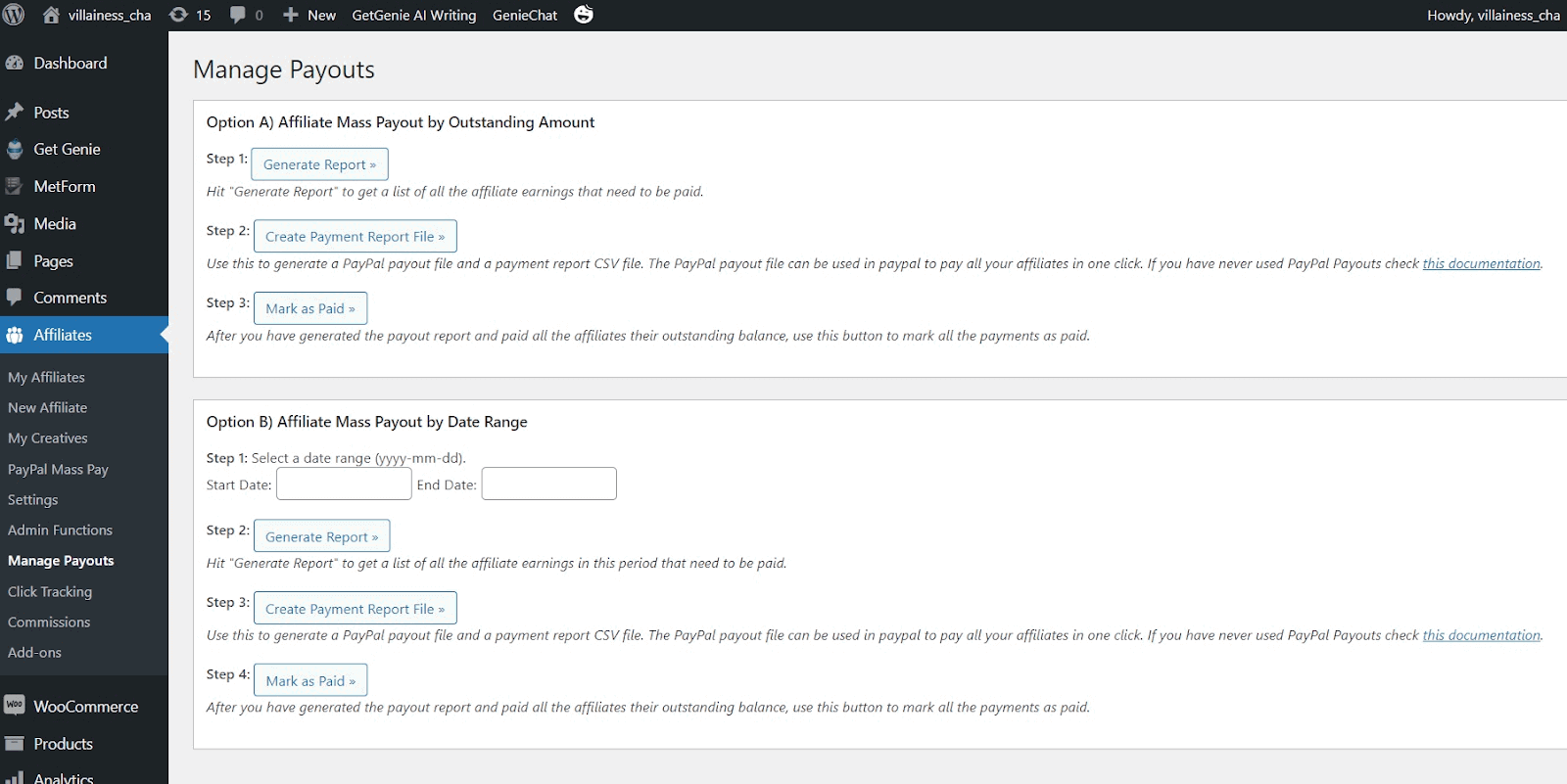Steps to Implement and Manage Affiliate Programs in WordPress (2025)

Tired of waiting for organic traffic to trickle in? Let’s face it, the internet is a crowded space, and standing out amidst the noise can be a challenging task. But what if there was a way to tap into a network of dedicated promoters?
Enter the affiliate program. It’s a win-win strategy that leverages the power of collaboration to unlock explosive growth.
If you’re using WordPress as your content management system (CMS), integrating an affiliate program is easier than ever. The key to success lies in:
- offering valuable content,
- building trust with your audience, and
- promoting relevant products or services that genuinely benefit them.
🤔 What is an Affiliate Program?
An affiliate program is an organized system. It enables affiliate partners to drive traffic to your properties through tracked links. They earn a cut when that traffic converts. Affiliates come in many different forms, and they can include:
- influencers,
- content creators,
- publications,
- membership associations, and
- technology vendors.
Imagine this: passionate individuals spread the word about your products or services. They earn a commission for every conversion they generate. You incentivize others to promote your work by turning your loyal fans into brand ambassadors. This unlocks a vast marketing network through their established audiences.

5 Steps to Implement and Manage Affiliate Programs in WordPress
Running an affiliate program on your WordPress site unlocks the potential for lucrative passive income. But to succeed, you need proper management. Here’s a simplified approach in 5 steps:
1. Choose the Right Tools
Choosing the right tools depends on your needs and budget. Consider factors like the size of your affiliate program, your technical expertise, and the features you need most. Don’t be afraid to experiment with different tools until you find the perfect combination for your success.
You can choose from AffiliateWP, Easy Affiliate Links, WP Affiliate Manager and many more. They all track referrals, automate payouts, and provide valuable insights into affiliate performance. Each has its strengths, so consider your needs and technical comfort. Once installed, configure settings like commission rates, cookie durations, and payment methods.
Let’s say you decided to go with WP Affiliate Manager.
After you install it in your WordPress, a fresh section labeled “Affiliates” will be visible. It presents various options to explore.

How to Add New Affiliate:
Utilize the “New Affiliate” tab to seamlessly add affiliates to your network. This is a more direct method of adding a new affiliate compared to redirecting someone to the normal registration form. Just fill out all the necessary contact information and the new affiliate will be sent an email containing their username and password. While their approval is automatic, they are required to log in to accept the terms & conditions and configure their preferred payment method.

How to Oversee Your Current Affiliates and How They Can Access Promotional Materials:
You can efficiently oversee current members via the “My Affiliates” section. From this section, you will see all your affiliate members including the active, inactive and even declined members and so on.

Additionally, empower your affiliates with promotional materials by leveraging the “My Creatives” section, where they can access ad banners and text links for effective promotion.
How to Manage Payouts to Your Affiliates:
Paying your affiliates can be through these 4 methods:
- Check
- PayPal
- Manual
- Bank Transfer
But mostly, payment is done through PayPal for convenience.
You have 2 options to pay your affiliates; Affiliate Mass Payout by Outstanding Amount and Affiliate Mass Payout by Date Range.
Steps to Pay by Outstanding Amount:
- Generate a report to get the list of all the affiliate earnings that need to be paid.
- Generate PayPal payout file and a payment report CSV file.
- After you pay all your affiliates, mark the payments as paid.
Steps to Pay by Date Range:
- Select the date range (yyyy-mm-dd) you want to pay.
- Retrieve a compilation of all affiliate earnings during this timeframe that require payment.
- Generate PayPal payout file and a payment report CSV file.
- After you pay all your affiliates, mark the payments as paid.

2. Cultivate Relationships with Affiliates
Remember, affiliates are partners, not just numbers. Actively seek out qualified individuals relevant to your niche. Look for engaged audiences and genuine passion for your offerings.
Cultivating relationships with your affiliates is a crucial part of the process. To ensure their success translates into yours, be mindful of these things:
- Build trust
- Offer exclusive resources
- Provide ongoing support
Segment affiliates based on niche, performance, or preferred methods. You can also offer incentives like public recognition, bonuses, or commission tiers.
Additionally, foster a collaborative environment through online communities and offline events. You can also encourage feedback on program improvements and prioritize value over sales. Encouraging honesty and transparency in promotions and content is also beneficial.
3. Optimize Content & Conversion
Ensure your website is a conversion haven. Create compelling marketing materials like banners, product reviews, and blog posts. These materials will fuel campaigns. Make sure to optimize your landing pages and checkout processes for seamless customer journeys.
Optimizing content for conversions in your WordPress affiliate program involves two key aspects:
- Optimizing Content for Value and Engagement:
Effectively promote your affiliate links. Target the right audience and focus on high-quality content. Choose the right format, and integrate affiliate links organically. Then, use strong calls to action.
Create engaging content that provides genuine value. But this can be achieved by understanding your audience’s needs, wants, and challenges. Remember to avoid sales tactics and focus on building trust and credibility.
- Optimizing for Conversion with A/B Testing:
Test various elements, such as headlines, calls to action, and content formats. Determine their effectiveness in driving conversions. Use A/B testing tools like MonsterInsights, Thrive Optimize, and WPForms to track website traffic. Continuously improve content based on data insights.
4. Monitor & Analyze Performance
Data is your compass. Use the built-in analytics tools to track performance metrics. These include clicks, conversions, and revenue generated by each affiliate. The data will make you stay informed and help you identify the top performers. By constant monitoring, you can adjust your strategies for an even greater impact.
Monitoring and analyzing the performance of your programs help you understand what’s working and what’s not to maximize your income. Getting the most out of your marketing campaigns requires that you monitor, analyze, and optimize them on an ongoing basis. Seasonal changes in markets result in seasonal variations in customer behavior. This also affects your acquisition strategy.
Affiliate software or analytic tools can be very useful. They track changes in market performance and allow for experimenting with new tactics. It can also help refine campaigns ahead of market trends. Usually, top performers are the ones having the biggest sales on a monthly basis, weekly or anyone who have met your SMART criteria.
5. Foster Community & Collaboration
Don’t let your affiliates be lone wolves. Build a vibrant community through forums, webinars, and social media groups. Share best practices, celebrate successes, and foster a collaborative spirit that drives collective growth.
A strong community and fostering collaboration among your WordPress affiliate program members are excellent ways to:
- Boost program engagement,
- Improve affiliate success, and
- Ultimately, increase your income.
By giving your affiliates networking opportunities, you may encourage the sharing of concepts, expertise, and best practices. This will boost their output and general happiness. Fostering this spirit of unity may result in better retention rates. It may also lead to more devoted members and an all-around more prosperous affiliate marketing organization.
More blog resources:
👉 Best Twitter Feed Plugins for WordPress
👉 Best Facebook Chat Plugins for WordPress
👉 Ultimate Guide to Structure an eCommerce Team
Wrapping Up
Implementing an affiliate program on WordPress doesn’t have to be a daunting task. With the right tools, a strategic approach, and a focus on collaboration, you can build a powerful network of advocates. This network can propel your brand to new heights. Remember, it’s a two-way street: by investing in your affiliates, you invest in your own success. So, open your doors, welcome passionate partners, and watch your revenue soar in 2025 and beyond!
Don’t underestimate the power of unique coupon codes for each affiliate. It allows you to track their performance individually. This way, you can incentivize healthy competition within your program.
Embrace the power of collaboration. Unlock the potential of WordPress. Let your affiliate program pave the way to a thriving online business. Good luck!
